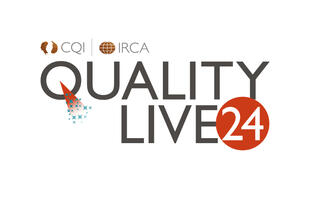
A truly integrated approach?
Progress indicator

Quality, health and safety, and environment are often put together in organisations, but how well have they been integrated? Paul Vaughan CQP FCQI takes a closer look.
Question: how many organisations’ websites boast of having an “integrated system approach”? Quite a few, I would suggest.
Yet, if we applied a little more scrutiny, how many of these organisations actually have a truly effective integrated approach? A few, if that?
To me, this form of creative marketing is no different from the bit, a little further down the organisation’s blurb, that reassures the prospective customer that it “works collaboratively”.
Really? How many of these organisations would be awarded ISO 44001 certification?
What’s in a name
Like most things in business, the success of a strategy or initiative comes down to why the organisation wants to change and the bottom line – how this will add value to the business.
From experience (albeit not personal), the financial saving of amalgamating three heads of department into one role is not a good starting point for a truly integrated approach – especially when these roles are seen as dispensable by those above (if you just heard a noise, that was the sound of me putting my foot in a stirrup, to get on my favourite hobby horse!).
Such roles are, ultimately, a cost that enables the organisation to deliver a product or service, just like the ‘sainted’ direct/project costs, with both having a relative impact on the shareholders’ dividends.
"In making a reasoned argument for integrating an organisation’s systems, health, safety, environmental and quality are good bedfellows."
Hopefully, without adopting the modus operandi outlined above, an organisation embarking on an integrated approach is likely to get bogged down in the semantics of giving the merged function a name. Although, with the exception of ‘QUENSH’ (quality, environmental, safety & health), they all seem to amount to 17 points on a Scrabble board!
This does tend to be a bone of contention; should it be SHEQ, HSEQ, QHSE, QSHE, or QESH, for example? This often depends on the prime competence of the individual fortunate enough to head up the function. In my case, I plumped for HSEQ.
Reasons for integration
In making a reasoned argument for integrating an organisation’s systems, health, safety, environmental and quality are good bedfellows. Although there is a tenuous argument of ‘quality over safety’, this won’t get anywhere near to the evils of an ‘operations/projects delivery over quality’ conflict of interest. I would confidently say that all three functions can work together with a shared independence.
Realistically, documented integrated management systems will still require health, safety, environmental and quality-specific procedures, as well as work instructions and forms – for example, inspections and workplace risk assessments.
The real magnum opus moment here, however, is in making your next-level-up processes integrated and all-encompassing. For example:
- Document management: all function documents should follow the same document management system process.
- Nonconformance and corrective action: anything that is a non-fulfilment of a requirement or arrangement (eg, a platform inspection tag being out of date) is a nonconformance and the corrective action should be a generic approach in terms of preventing recurrence of the nonconformity.
- Audit: whether it is an environmental, health and safety, or quality audit, it should follow the same approach and conduct methodology. Ideally, carry out an integrated audit, with the checklist taking care of the function-specific areas for audit.
- Management review: not always the leadership team’s favourite meetings, so why not give them back some time by holding a combined management review?
- Lessons learned: lessons are ‘lessons’ and, as a process, don’t necessarily need their own receptacles, provided they are truly learned from.
- Improvement: all three standards offer guidance on, and a steer to, adopting a common Plan, Do, Check, Act cycle approach.
- Communications: we would not change our voice to communicate a quality message rather than a safety one, so why change the method of communication for each function?
- Customer feedback: all recorded feedback is either a dissatisfaction/complaint or a compliment at a process level, and will require the nonconformance and corrective action or the best practice process to kick in.
- Investigation: why have the debate of, for example, HSG 245 vs root-cause analysis, when the tools for both should sit in the same toolbox. Again, the investigation approach is generic – that is:
- executive summary;
- overview;
- findings – eg, sequence of events/timeline;
- underlying/contributing factors;
- root cause(s);
- conclusion;
- recommendations;
- actions.
Shared behaviours
Another shared process is behaviours, where, more often than not, an organisation will develop and implement a behavioural-based safety programme. But what about quality and environmental behaviours? Surely there must be a synergy there?
Why don’t we just call it a ‘behaviour’ programme, and allow it to cater for all discipline functions, such as leadership, designing, and procuring/supply chain management.
So, here’s the challenge for all managers (including myself) responsible for heading up the health, safety, environmental and quality activities.
Can you, hand on heart, say that you have a truly effective integrated management system in place? One that can clearly demonstrate added value to the business and not just satisfy an accredited body’s integrated management system certificate proudly hanging on the reception wall?
Want to read more like this?
Should quality professionals be seen only as the enforcers of quality? Paul Vaughan CQP FCQI outlines the key role of open communication to avoid problems before they occur.
Volunteer at the CQI

Volunteers are the lifeblood of the CQI. Find out how you can support the quality profession, shape its future and learn from your peers.




